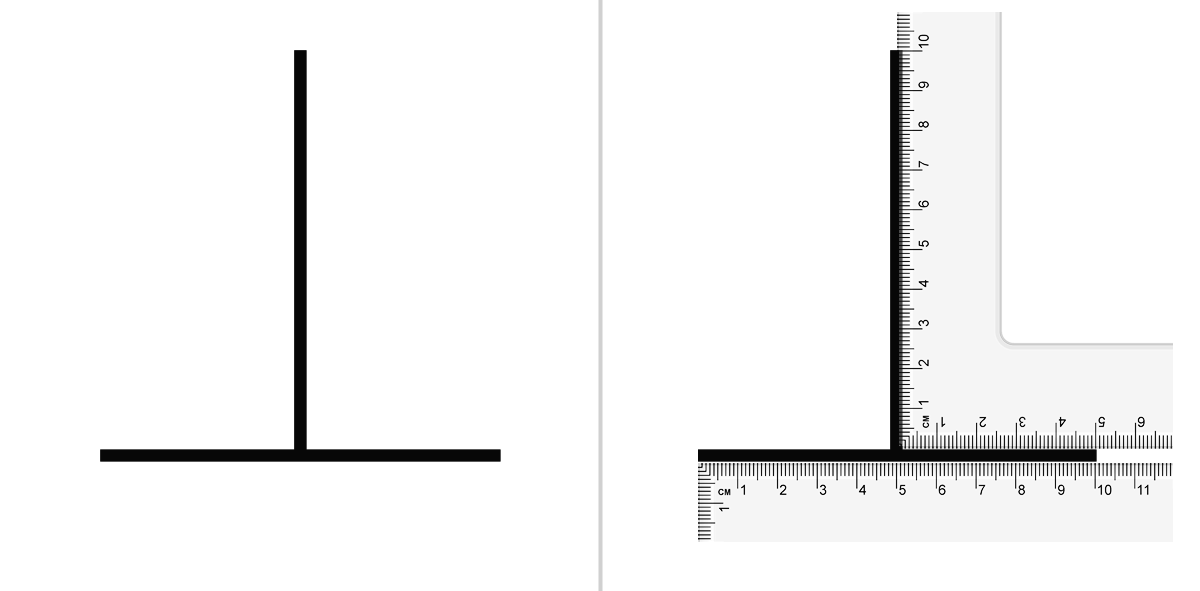Wundt illusion on:
[Wikipedia]
[Google]
[Amazon]
The Wundt illusion is an
 Another variant of the Wundt illusion is the '' Horizontal–Vertical Illusion'', introduced by Wundt in 1858. The two intersecting lines are equal in length although the vertical line appears to be much longer. The horizontal line needs to be extended up to 30% to match the perceptual length of the vertical line. This is not confined to simple line drawings, as this can also be seen in buildings, parking meters, as well as other things viewed in a natural setting.
Another variant of the Wundt illusion is the '' Horizontal–Vertical Illusion'', introduced by Wundt in 1858. The two intersecting lines are equal in length although the vertical line appears to be much longer. The horizontal line needs to be extended up to 30% to match the perceptual length of the vertical line. This is not confined to simple line drawings, as this can also be seen in buildings, parking meters, as well as other things viewed in a natural setting.
optical illusion
Within visual perception, an optical illusion (also called a visual illusion) is an illusion caused by the visual system and characterized by a visual perception, percept that arguably appears to differ from reality. Illusions come in a wide v ...
that was first described by the German psychologist Wilhelm Wundt
Wilhelm Maximilian Wundt (; ; 16 August 1832 – 31 August 1920) was a German physiologist, philosopher, and professor, known today as one of the fathers of modern psychology. Wundt, who distinguished psychology as a science from philosophy and ...
in the 19th century. The two red vertical lines are both straight, but they may look as if they are bowed inwards to some observers. The distortion is induced by the crooked lines on the background, as in the Orbison illusion. The Hering illusion produces a similar, but inverted effect.
Vertical-horizontal illusion
 Another variant of the Wundt illusion is the '' Horizontal–Vertical Illusion'', introduced by Wundt in 1858. The two intersecting lines are equal in length although the vertical line appears to be much longer. The horizontal line needs to be extended up to 30% to match the perceptual length of the vertical line. This is not confined to simple line drawings, as this can also be seen in buildings, parking meters, as well as other things viewed in a natural setting.
Another variant of the Wundt illusion is the '' Horizontal–Vertical Illusion'', introduced by Wundt in 1858. The two intersecting lines are equal in length although the vertical line appears to be much longer. The horizontal line needs to be extended up to 30% to match the perceptual length of the vertical line. This is not confined to simple line drawings, as this can also be seen in buildings, parking meters, as well as other things viewed in a natural setting.
References
Optical illusions {{Psych-stub